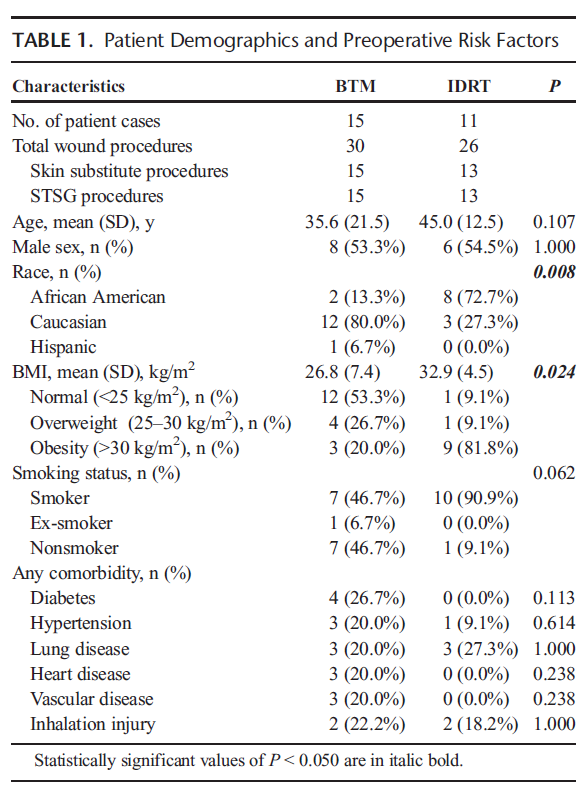On today's call, DW is referring to a comparison study putting Novosorb head-to-head with Integra's animal-derived product. I think this might be it.
It looks like a big deal - particularly given the overall healthcare economics findings, which is going to be important to the payors, particularly the health funds in the US. However, healtcare economics may also influence guidance in nationalised systems like UK, and reimbursement systems like Medicare in Australia.
==============================
Comparative Analysis of Animal-Derived vs Fully Synthetic Acellular Dermal Matrices in Reconstructive Surgery An Examination of Clinical, Aesthetic, and Economic Measures Timothy Olsen, MBA, Safi Ali-Khan, MD, and Derek Bell, MD, Annals of Plastic Surgery, Volume 92, Supplement 2, April 2024
Introduction: The fully synthetic skin substitute, NovoSorb Biodegradable Temporizing Matrix (BTM), may be a cost-effective alternative to the animal-derived Integra Dermal Regeneration Template (IDRT). However, the current literature insufficiently compares the two. Therefore, our study compared clinical, aesthetic, and economic outcomes in treating soft tissue wounds with IDRT, an animal-derived template, vs BTM, a fully synthetic template
Methods: Our single-center retrospective study compared outcomes of 26 patient cases treated with BTM (57.7%) or IDRT (42.3%) during 2011–2022.
Results: The mean surgery time was significantly shorter in BTM cases (1.632 ± 0.571 hours) compared with IDRT cases (5.282 ± 5.102 hours, P = 0.011). Median postoperative hospital stay was notably shorter for BTM placement than IDRT placement (0.95 vs 6.60 days, P = 0.003). The median postoperative follow-up length approached a shorter duration in the BTM group (P = 0.054); however, median follow-up visits were significantly lower in the BTM group compared with the IDRT group (5 vs 14, P = 0.012). The median duration for complete wound closure was shorter for BTM (46.96 vs 118.91 days, P = 0.011). Biodegradable Temporizing Matrix demonstrated a notably lower infection rate (0.0%) compared with IDRT (36.4%, P = 0.022). Integra Dermal Regeneration Template exhibited higher wound hypertrophy rates (81.8%) than BTM (26.7%, P = 0.015). Revisionary surgeries were significantly more frequent in the BTM group ( P < 0.001). Failed closure, defined as requiring one or more attempts, exhibited a significant difference, with a higher risk in the IDRT group (26.7%) compared with BTM (6.7%, P = 0.003). Biodegradable Temporizing Matrix showed a lower mean Vancouver Scar Scale adjusted fraction (0.279) compared with IDRT (0.639, P < 0.001). Biodegradable Temporizing Matrix incurred lower costs compared with IDRT but displayed a lower mean profit per square centimeter ($10.63 vs $22.53, P < 0.001).
Conclusion: Economically, although the net profit per square centimeter of dermal template may favor IDRT, the ancillary benefits associated with BTM in terms of reduced hospital stay, shorter surgery times, fewer follow-up visits, and lower revisionary surgery rates contribute substantially to overall cost-effectiveness. Biodegradable Temporizing Matrix use reflects more efficient resource use and potential cost savings, aligning with broader trends in healthcare emphasizing value-based and patient-centered care
